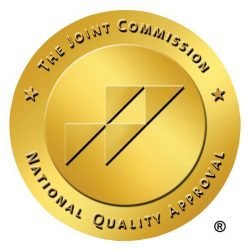Guest Post by Katie Thompson, LPC, NCC, CEDS
Eating disorders are influenced by many factors. Two common factors are:
- Genetics
- Environmental dynamics experienced by a person
It is not always easy to flush out whether the genetics or the familial environment is the origin of the eating disorder struggle.
A Closer Look at Environmental Dynamics: Stepping Outside the Cycle of Blame
If a person comes from a family in which others struggle with an eating disorder (or is exposed to eating disorder behaviors), the first intervention is to step out of the cycle of blame if it is part of the family dynamics.
Blame is placing the entire responsibility for one’s unpleasant actions, consequences and feelings on another person or external event…
Blame is a lose-lose situation and can lead to:
- Fear
- Mistrust
- Disconnection
These can perpetuate many of the relationship dynamics that may have precipitated the eating disorder in the first place. The goal is never to blame the family or the client for struggling with or having an eating disorder. The second critical goal is to accept self-responsibility. No one person is the “cog” of a loved one’s eating disorder. Both the client and the family benefit from looking at their interpersonal and relationship dynamics. Everyone needs to step outside of the cycle of blame.
What is Blame All About In a Family Struggling with an Eating Disorder
The desire to lay blame is really about a desire to gain control. It is a feeling that if someone or something is responsible, then changes can take place. However, the reality is that blame creates a lack of emotional safety in relationships.
Taking self-responsibility comes in many forms and actions, such as:
- Showing up for family sessions to support the client (not always easy, since sometimes family members worry they will be made to feel that they were at fault or the cause of the eating disorder)
- Telling the family member with the eating disorder “you are not alone in this.”
Blame looks more like this: This is your eating disorder, you started it, so you figure out how to deal with it.
When a family commits to a “no-blame” approach, the next step is to take a deeper, more honest look at the dynamics within the family. This includes communication styles and behaviors around food and exercise. This examination of family dynamics helps everyone understand whether the family strategies used are adaptive or maladaptive. Leaving blame off the table means that each person involved is able to identify which dynamics and behaviors are theirs to own. A feeling of safety is essential, and this is what stepping outside the cycle of blame creates.
…And Then There is Recovery
Ultimately, a client’s recovery does not depend on the eradication of a family member’s personal eating disorder struggle. Each person involved, including the person with the eating disorder, is responsible for their own choices.
Honest and open communication about eating disorder symptoms and behaviors that “run in families,” can allow a client to make sense of the reasons that they are struggling (sometimes genetic and environmental). From an eating disorder clinician’s point of view, families feel gratitude for the opportunities the “no-blame” dynamic creates for healing (both client and family.)
Staying open, curious and connected allows families and clients alike to heal from the pain of eating disorders that are both genetic and generational. What are your experiences? Share your comments and observations here!
[cta]Keep the conversation going by commenting here, and then sharing your personal affirmations on Instagram using hashtag #NoFilter. Your affirmation may be what someone else is seeking as a guide in their own recovery![/cta]




